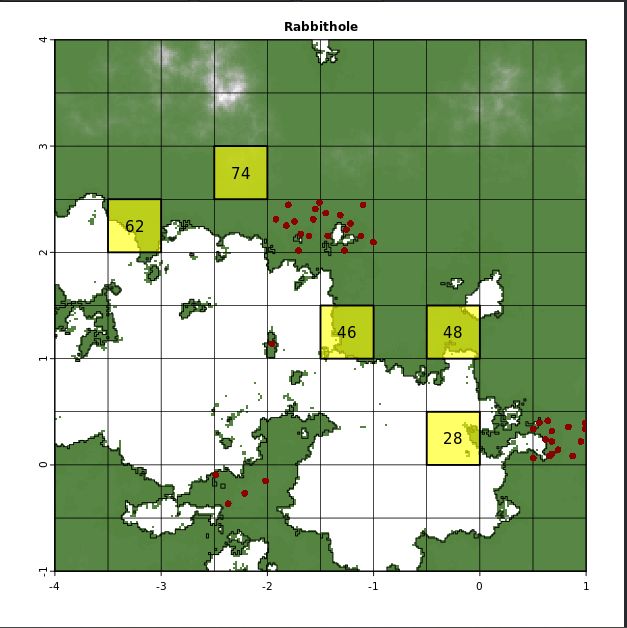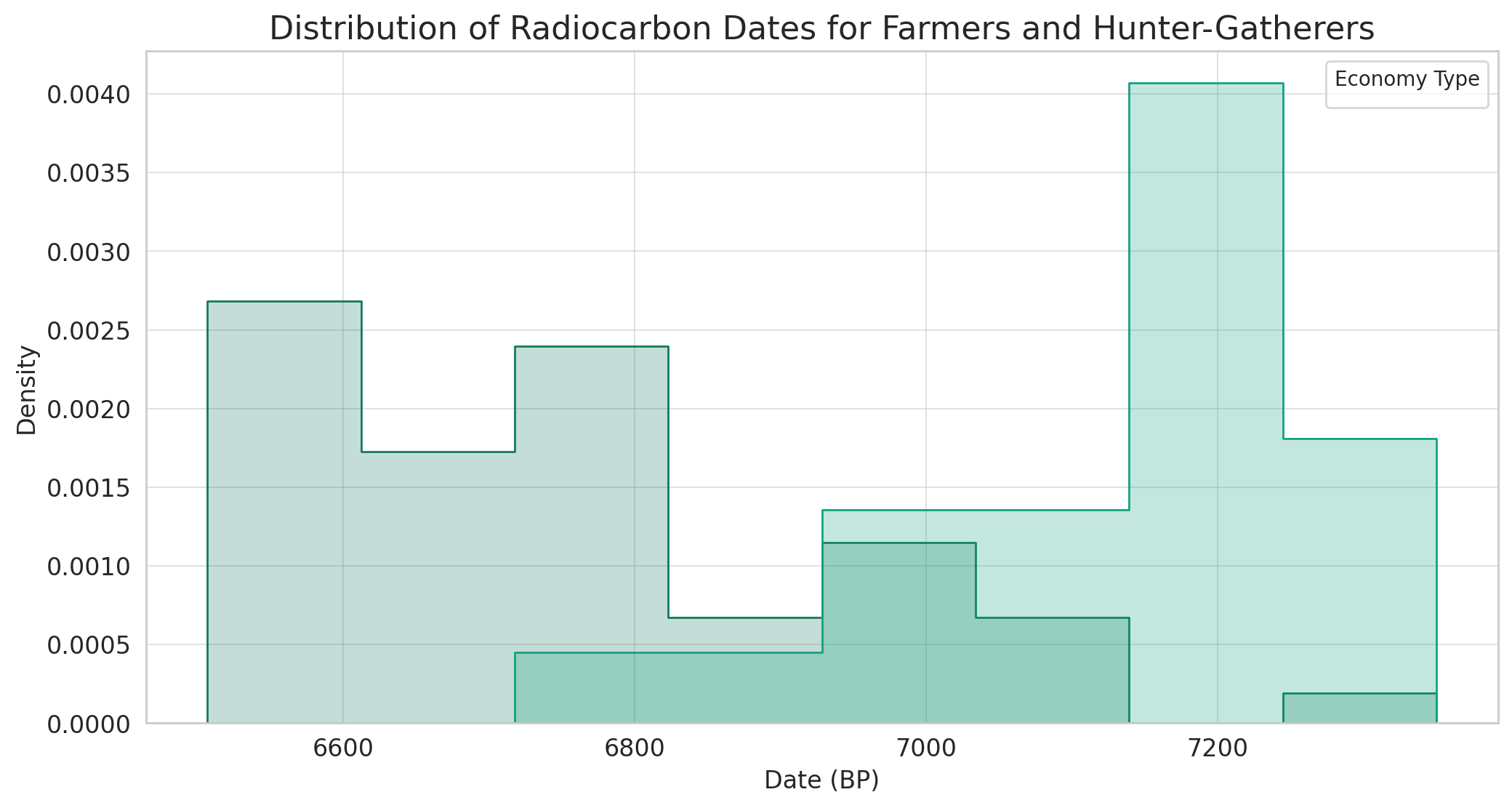

न :: NA :: naive
ल :: LA :: lazy
न :: NA :: narrative

Some poetic names (Pulogne!) were already provided by organizers
I call the main body of water „Middlesea“, the southern landmass „Frica“, the northern land mass „Youresia“, and the eastern shore „Orient“.
Note: Observe how a simple choice of names which are reminiscent of a real-world situation immediately biases one's thought and reasoning.

poppy chewers culture emerged in Frica, their site Farwallow being the main hub, after mastery of boat-building technology around 7200 BP expansion both to north (Rabbithole) as well to the east (Bourville) ensues
oldest rabbit skinners settlements were discovered in Youresia (Tertexo-Astumanca-Zava cluster), somewhat newer ones in Orient
rabbit skinner settlement dates cover short time spans (one, max two radio-carbon dated samples for HG), some poppy-chewer settlements cover much longer time spans (oh that splendid longevity of Farwallow, Rabbithole, Bearcall!)
Bourville site (chewers), which seems to be located in the region where both cultures first got into contact sometimes around 7100, is of rather short duration, indicating potentially (hostile) destruction of the settlement
Fast demise of chewer’s Talona colony around 7060 corrobates the hypothesis of hostilities
Some years later – around 7000 - the same holds for oriental (Montnesse) and youresian (Mulid) poppy farms
since arrival of farmers in non-Frican regions, no presence of longer-lasting (>1 carbon dated sample period) skinner settlement is observed

Sector 46: Absence of HG settlements. Presence of multiple long-lasting F settlements.
Sector 48: Presence of surprisingly long-lasting HG settlements including the oldest one replaced around 6870 by F settlements.
Sector 28: HG replaced by F between 6900 and 6650.
Sector 74: Short-term HG settlements replaced between 6800 and 6750 with F culture. The youngest discovered HG settlement dates to 6785
Sector 62: HG settlements replaced by F settlements betwen 7150 and 6950.
H0: An HG settlement as old as 7200BP will be excavated on island in sector 35, maybe even older settlements on Frica's northernmost coast (sector 25).

GPT4 understands the tasks and generates all necessary python code which loads the CSV data into dataframes
histograms, plots, heatmaps ...
... Bayesian analysis (GPT4:: "It seems that our Bayesian model still results in a probability of 0 for peaceful assimilation. This outcome is likely due to an oversimplification in our model, specifically in how we're computing spatial overlap and updating our beliefs.")
all can now be done without little knowledge of Python or R altogether !